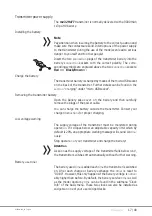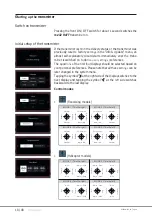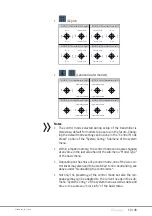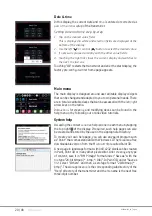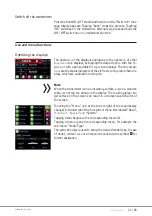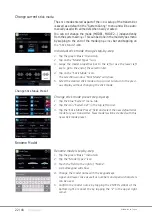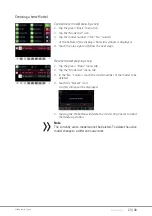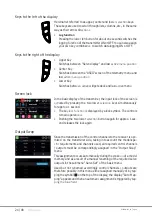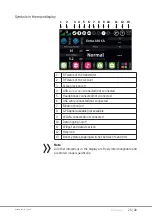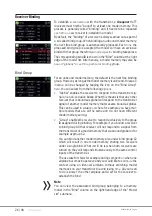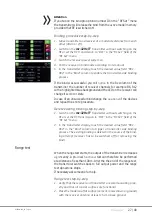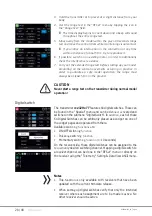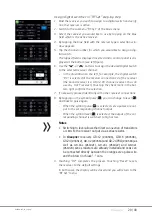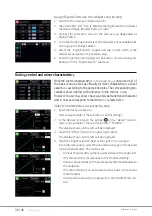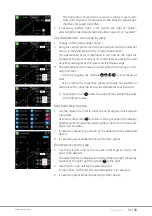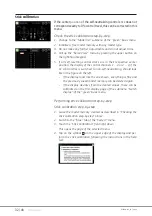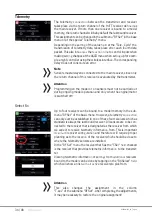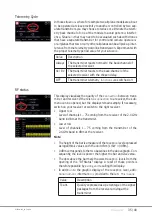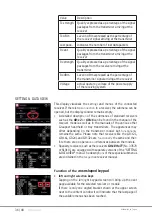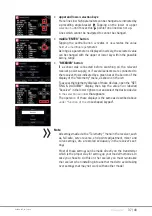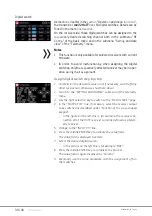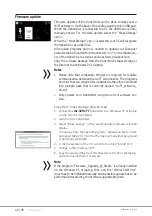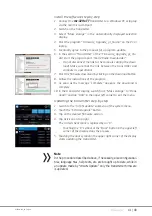
26 / 48
S1024.mz32_V1.7_sh_en
Receiver Binding
To establish a c
ŽŶŶĞĐƟŽŶ
with the transmi
Ʃ
er, a
Graupner
HoTT
receivers must
Į
rst be "bound" to at least one model memory. This
process is generally called "binding" and it needs to be repeated
ĞĂĐŚƟŵĞĂŶ
ew receiver is installed in a model.
By default, the "binding" of a receiver is always carried out as part of
a so-called bind group. When binding an unbound model memory,
the next free bind group is automa
Ɵ
cally proposed. Each
ƟŵĞ
the
proposed bind group is accepted the model will have an exclusive
bind with that group therefore, a
ŵŽĚĞůͲƐƉĞĐŝĮĐ
binding takes place.
The corresponding bind ID is shown in the "Bind" column at the right
edge of the model list. Alterna
Ɵ
vely, a model memory may also be
ďŽƵŶĚΗŐůŽďĂůůLJΗŽƌǁŝƚŚŝŶĂƉĂƌƟĐƵůĂƌďŝŶĚŝŶŐŐ
roup.
Bind Group
For an unbound model memory, the default is the next free binding
group. However, as long as the model memory is unbound, this spec-
ŝĮ
ca
ƟŽŶ
can be changed by tapping the icon on the “Bind Group”
ĮĞůĚ͘
You can select from the following op
ƟŽŶƐ͗
ͻ
"Global" enables the receiver to respond to the transmi
Ʃ
er sig-
nal on a non-exclusive bases. What this means is that any other
receiver that is bounds as global will respond to the transmi
Ʃ
er
signal of another model memory that was also bound as global.
This can be used in situa
ƟŽŶƐ
where for example you have mul-
t
n
e
r
e
f
f
i
d
d
e
e
n
t
o
n
o
d
d
n
a
e
m
a
s
e
h
t
l
l
a
e
r
a
t
a
h
t
s
l
e
d
o
m
e
l
p
i
t
model memory se
ƫŶŐƐ͘
ͻ
"Group" enables the receiver to respond exclusively to the group
ID assigned during binding. For example if you bound a receiver
to bind group A0 that receiver will not respond to a signal from
the transmi
Ʃ
er of a model memory that was bound global or for
example as group C2.
You can bind another model memory also under bind group C2
which will result in one model memory sharing two receivers
under a single bind. What it will do is when both receivers are
turned on they will respond simultaneously to the same control
inputs of the transmi
Ʃ
er.
The use case for this is for example during compe
ƟƟŽŶ
when one
airplane becomes inopera
Ɵ
ve and you would like to con
ƟŶƵĞ
the
contest using an iden
Ɵ
cal airplane without switching model
memories on your transmi
Ʃ
er to avoid losing
ƟŵĞ͘
All you need
to do is power the other airplane and wait for the receiver to
establish the bind
Note
You can view the associated bind group belonging to a memory
model in the "Bind" column on the right-hand edge of the "Model
>ŝ
st" submenu.
Summary of Contents for mz-32 HoTT
Page 2: ...2 48 S1024 mz32_V1 7_sh_en ...
Page 39: ...39 48 S1024 mz32_V1 7_sh_en ...
Page 43: ...43 48 S1024 mz32_V1 7_sh_en ...
Page 44: ...44 48 S1024 mz32_V1 7_sh_en ...
Page 45: ...45 48 S1024 mz32_V1 7_sh_en ...
Page 48: ......






